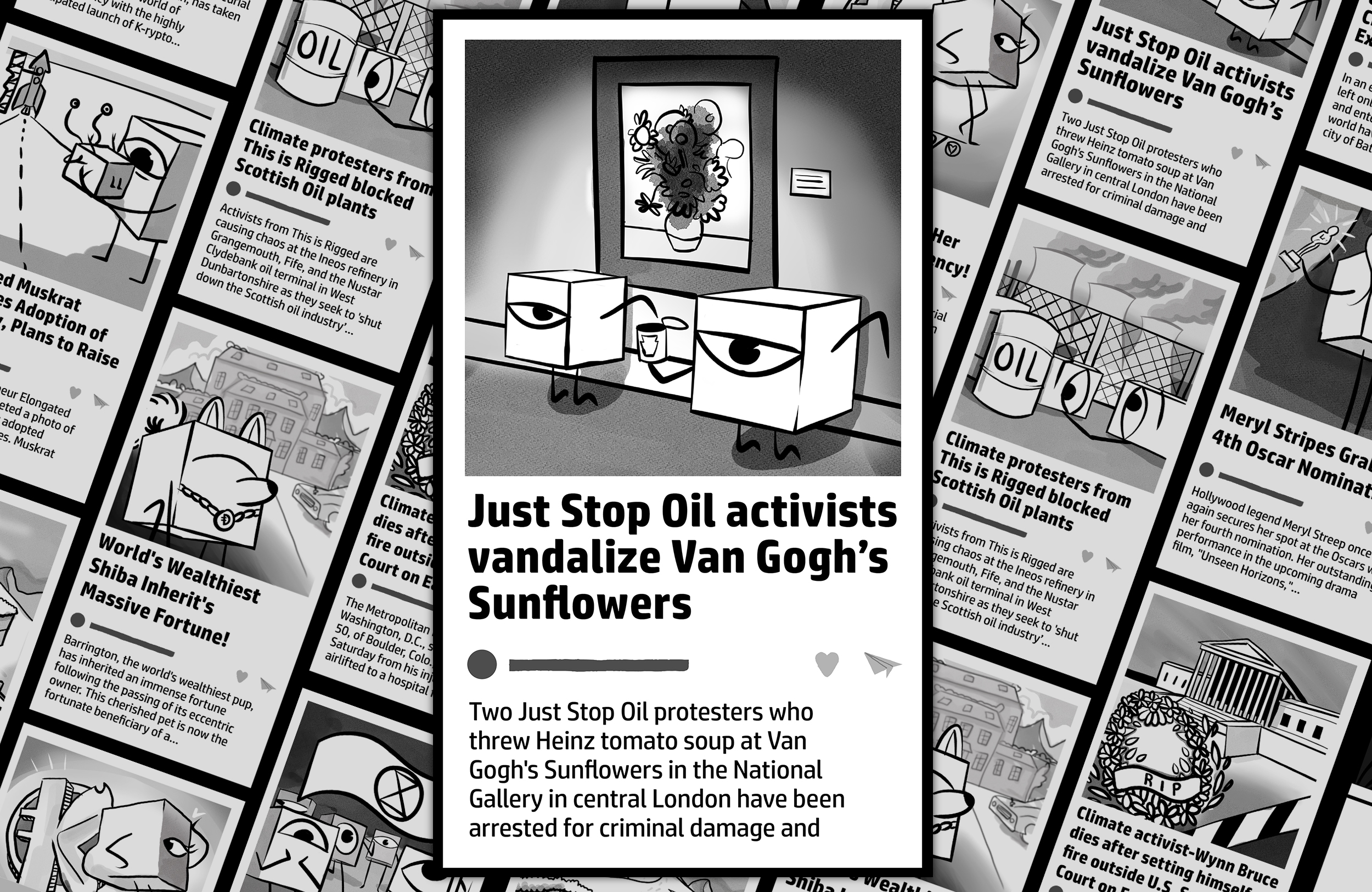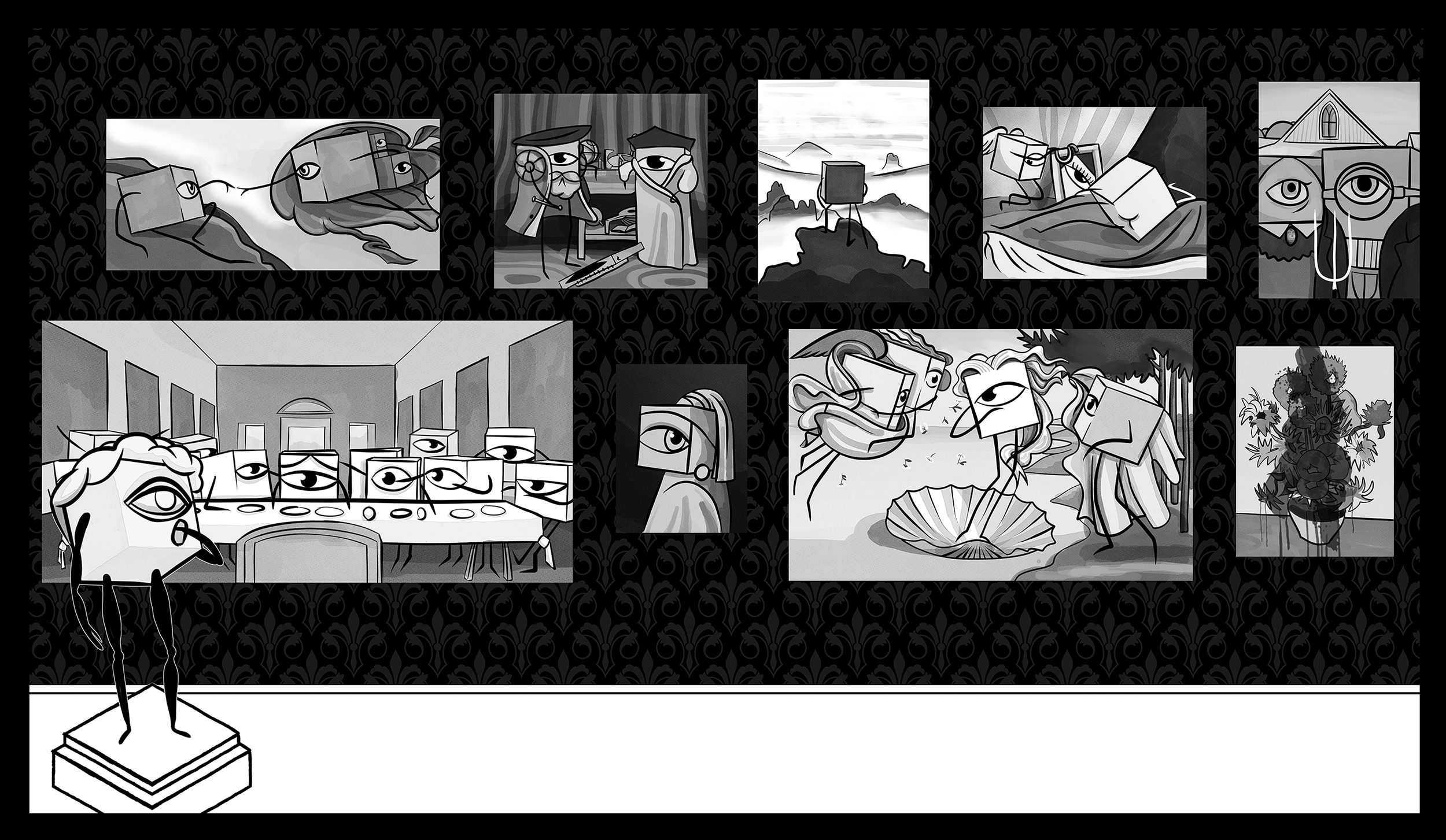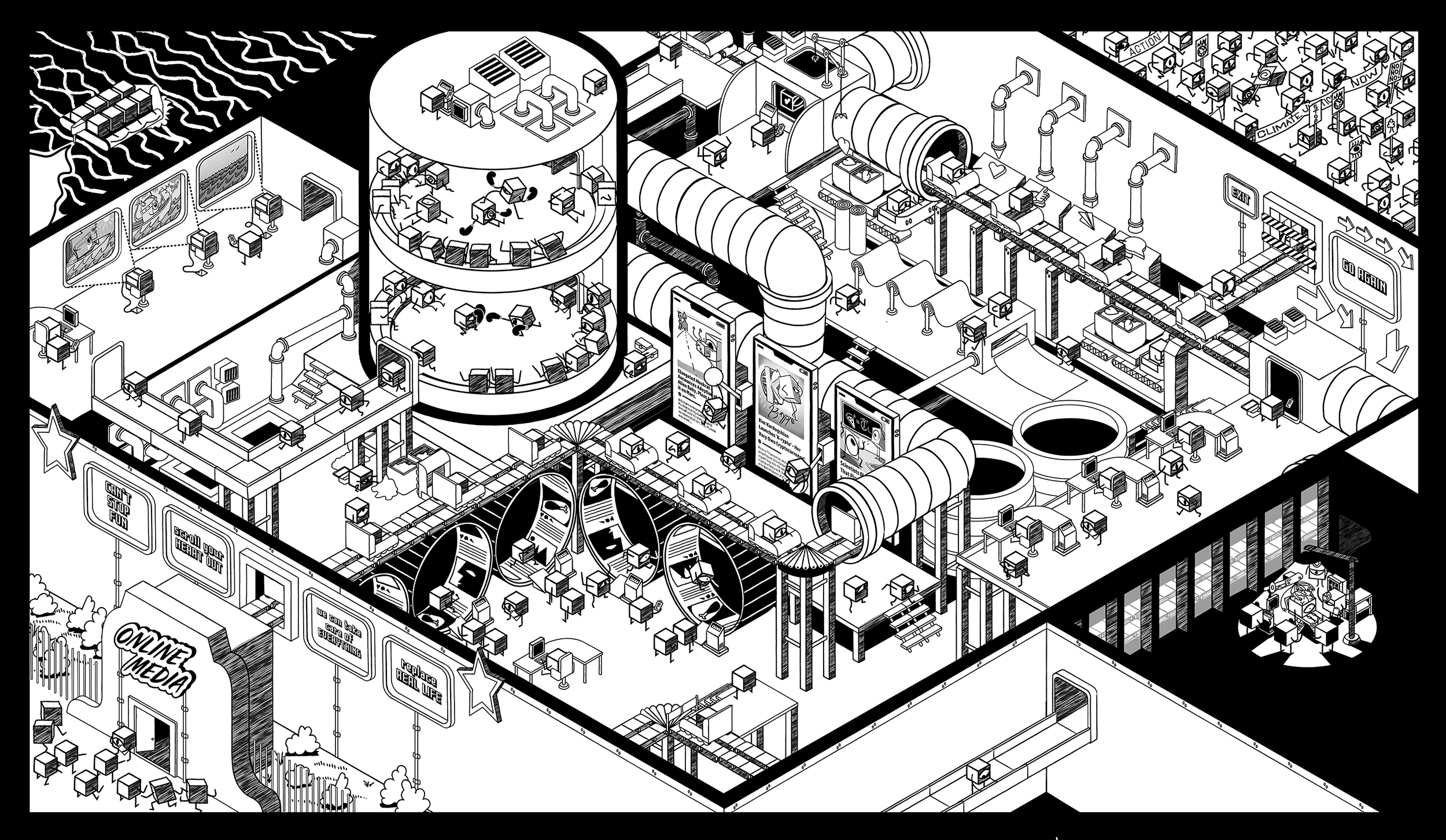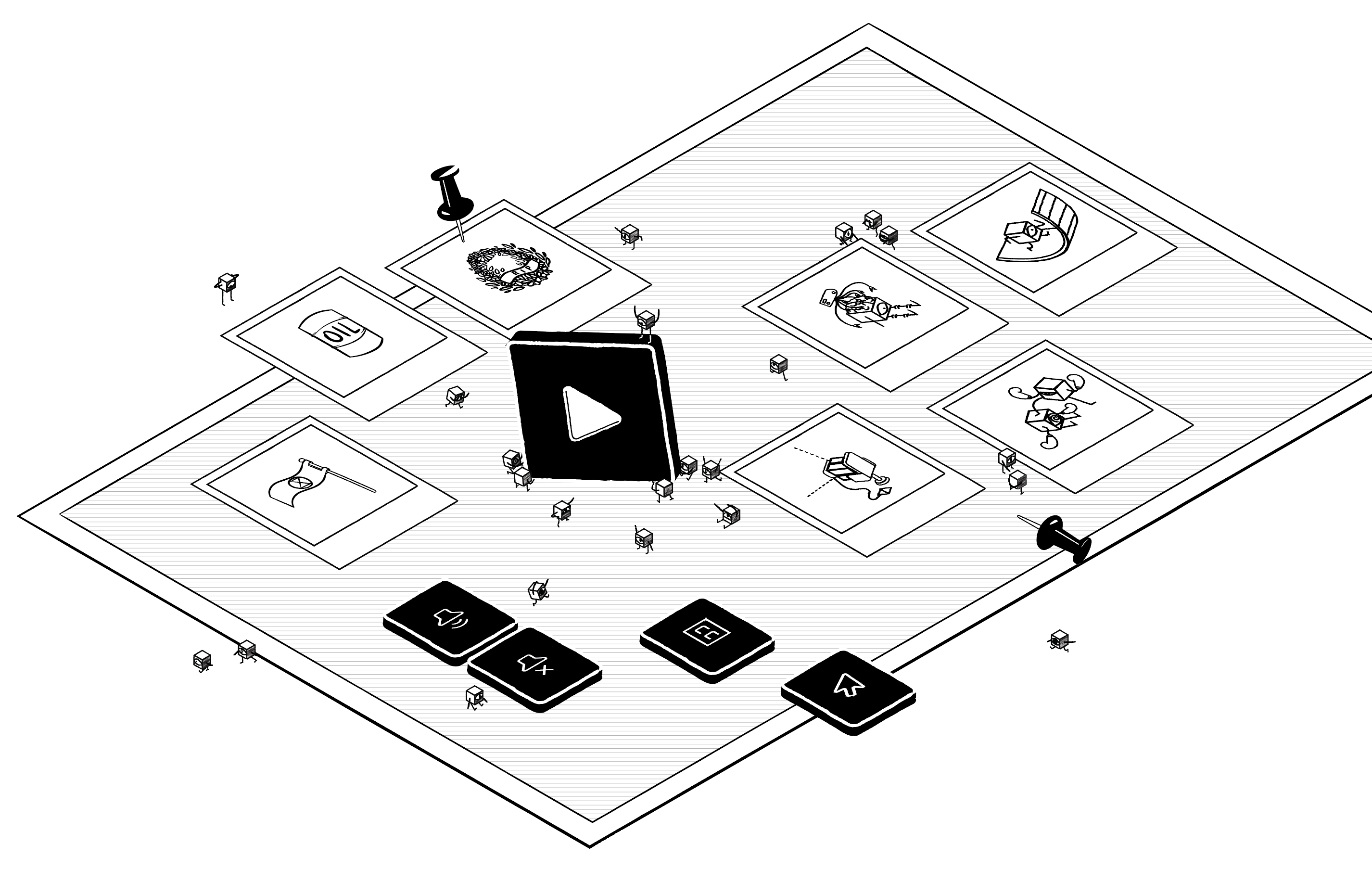Focus, But Where?
‘Focus, But Where?’ is a web-based hidden object game that playfully explores the intersection of climate change activism and our complex digital landscape. This project was born from the idea that addressing climate change not only requires radical changes in our natural environment but also transformation of the media landscape we inhabit.
Through the language of a hidden object game, we guide players through an investigation related issues: From how, under an attention economy, our mode of media consumption encourages activists to curate sensational content for maximum exposure, to how manipulative UX/UI designs crafted by tech companies contribute to echo chambers, polarization, and the spread of misinformation around environmental issues, to the influence of lobbyists on the climate change narrative we consume.
Currently the game is still in development, you can find out more about it here.
My Contribution
I was commissioned to create a selection of low-key background music pieces and sound design for each hidden-object game chapters. Below are the sample tracks.

Chapter 1: Lost in The Flood
In this opening chapter, we highlight how important issues like climate change are often drowned out by attention-grabbing but inconsequential tabloid entertainment news. In this instance, we ask our player to spot the three climate-related articles amid this flood of digital content with the visual clues we give out.
BGM Track for Chapter 1 is a bouncy synthetic beat that reflects the levity at this moment in the game.

Chapter 2: The Soup and Van Gogh
The second chapter focuses on a famous climate protest: the Van Gogh soup protest. By analysing the initial public response, examining the protest’s portrayal in the media, and drawing from historical instances of radical protests, we aim to uncover reasoning behind the protest, its impact on the national discourse, and the attention it garnered across the media landscape. In one section, we explore the omission by the media of the fact that the painting was protected by safety glass, a fact the activists were aware of. This omission drove much of the rage directed at activists, at the same time, without it, the story would have been unlikely to gather the attention it received.
BGM Track for Chapter 2 is a classically-influenced piece, reflecting the ‘high-class’ surroundings of the level’s gallery.

Chapter 3: Addict Factory
Chapter two naturally leads to the question of why? Why is our digital landscape such that only an act such as the Van Gogh protest breaks through for more than a moment? This chapter seeks to answer that question. We illustrate how our online world contributes to echo chambers, extremism, and addiction, touching on manipulative UX/UI designs crafted by tech companies, the attention economy that dominates discourse and the commodification of human weaknesses, turning us into products rather than customers.
BGM Track for Chapter 3 subverts the theme of the previous track in a minor key, with a rigid digital feeling that musically contrasts and reflects the factory surroundings.
Chapter 4: The Spiders in The Attic
The Spiders in the attic focus on the influence of lobbying bodies and the ultra-wealthy on the media we consume. In particular, it discusses the demonisation of activists and the normalisation of violence, both from the public and the police, against them. It presents the interconnection of lobbying bodies, politicians, and press through the imagery of spiders languishing in a dusted attic, each spider revealing another layer of influence.
BGM Track for Chapter 4 descends even darker with a jagged atonality.
Chapter 5: Zooming Out of Our Paper House
In the final chapter, we zoom out from the media landscape the game has navigated throughout its run to witness the future that looms if we fail to act. Flood water rises to consume a city, paper houses dissolving into a wall of water. Players explore their city decades into the future to search for tangible local effects of the potential breakdown of climate systems with a 4°C (7.2°F) rise in global temperatures by the end of the century. By studying scientific predictions and translating them into tangible imagery anchored in specific, recognizable locations within a familiar city, we aim to illustrate a graspable future for the player that could potentially be prevented from happening.
BGM Track for Chapter 5 is the desolation post-climate-apocalypse.

BGM Track for Menu/Inventory Page has an aura of mystery to it to intrigue the player to start/continue their playthrough of the game.
Credits
“Focus, But Where?”’s initial narrative and concept design were created during Kexin Liu’s Research Residency at Watershed’s Pervasive Media Studio (01/02/2023 – 13/04/2023) and were further developed with the generous support of Grounding Technologies (01/08/2023 – 01/12/2023), funded by the Arts and Humanities Research Council, and Department for Media, Culture and Sport.
Its latest game prototype was supported by Grand Fund (Spring 2024 round)
Project team:
Kexin Liu – project director
Kai Charles – researcher & writer
Inigo Hartas – illustrator
Xingzhi Zheng – game designer & programmer
Jake Wild – sound designer
Jiashun Wu – programmer
Showcase History
Showcased at Game Transformed 2024 with developer’s talk, pelican house, London, 22/06/2024.
Showcased at IMPACT! Indie Games 2024, Strange Brew, Bristol, 23/05/2024.
Talk at Grounding Technologies Programme Sharing, Watershed, Bristol, 01/12/2023.
Press History
Latest game review Attention Economy Meets Climate Action: The Innovative World of ‘Focus, But Where?’, written by Unveilral, on Artist Responding To … 12/07/2024.
This project is also featured in Julie’s Bicycle and Bristol 24/7.